To Taos
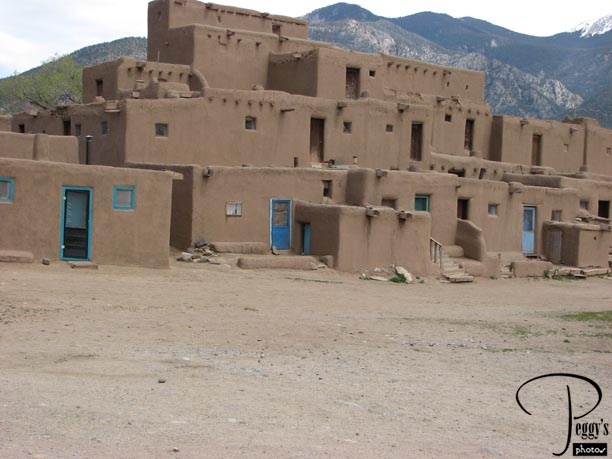
Taos is 70 miles north from Santa Fe and about 132 miles from Albuquerque. Since the drive up to Santa Fe was so easy yesterday, I decided to drive myself to Taos today (my sister wasn’t able to come with me). I had previously read that the drive from Santa Fe to Taos was over a mountain pass, but when my doctor in Los Angeles, who had taken the drive, told me that it was straight desert driving, I decided it was something that I could do. I am not an adventurous driver and do not like any kind of mountain driving. Photo: My destination in Taos––the famous Taos pueblo.

To Taos
To Taos

Pretty scenery on the 68, but you can see that the road is about to go uphill.

To Taos
To Taos
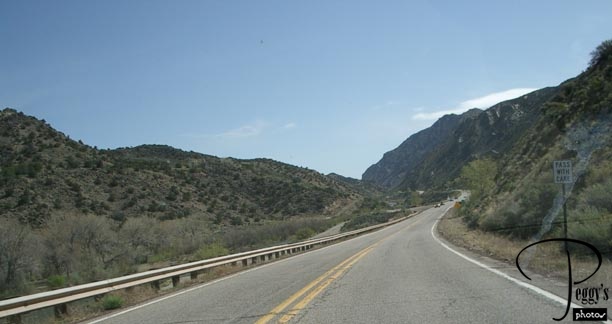
Onward.

To Taos
To Taos
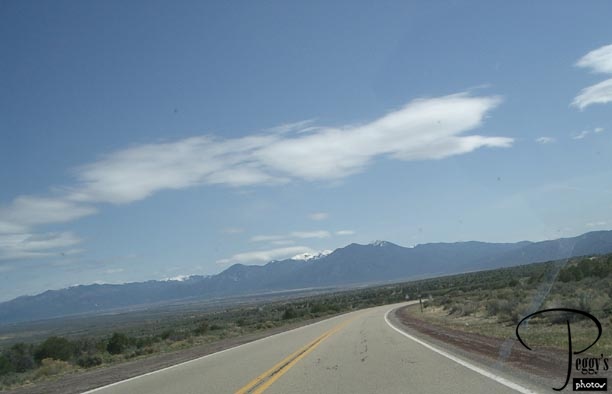
Beautiful flat land.

To Taos
To Taos
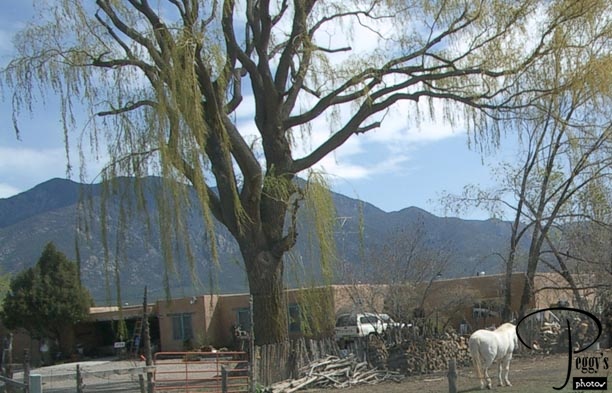
Small ranch on the 68. Jill thinks this was in the town of Enbudo.

To Taos
To Taos
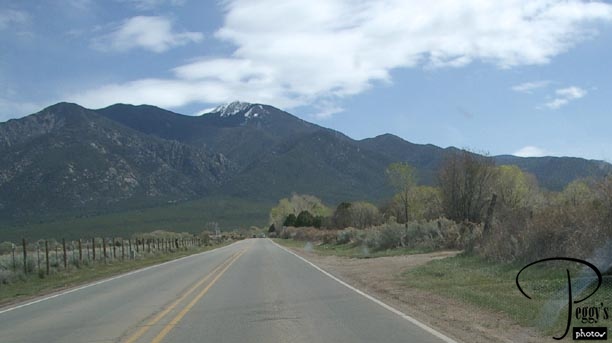
A mountain in the distance, but I think that this section was flat (probably also in Enbudo).

To Taos
To Taos
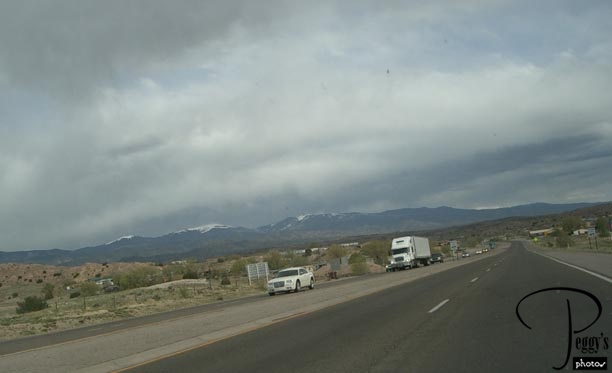
Taos is now in the distance and here is that flat desert road.

To Taos
Taos Pueblo
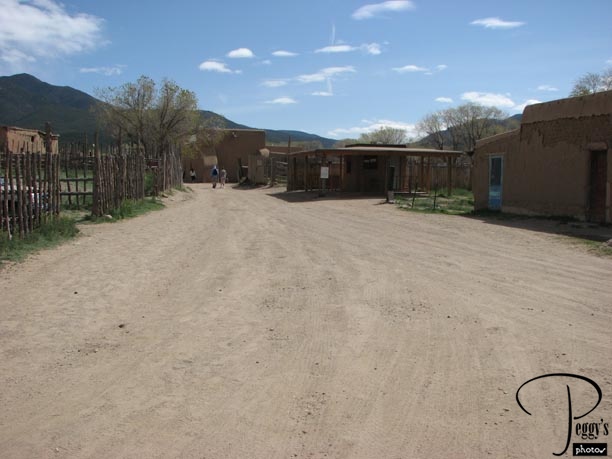
To get to the Taos Pueblo, you drive straight through the town of Taos, then four more miles to the Pueblo. It costs about $10 to visit the Pueblo, plus a $5 photo fee. The Taos Pueblo is the only living Native American community to be both a World Heritage Site by UNESCO and a National Historical Landmark. Photo: Entrance to the Pueblo.

Taos Pueblo
Taos Pueblo
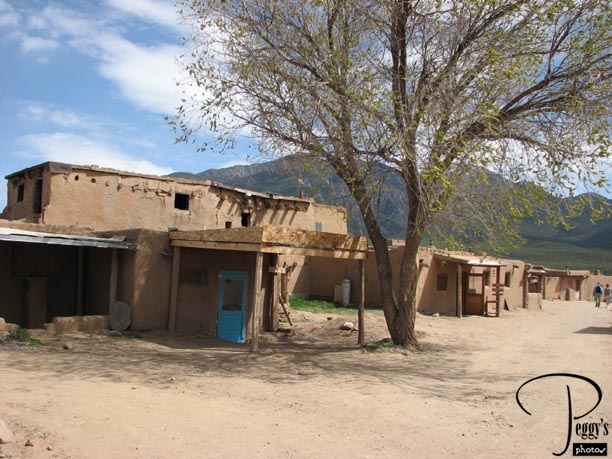
Walking along. More than 100 Taos Indians still live in the Pueblo. There is no electricity and no running water. About 2,000 other Taos Indians live elsewhere on the 100,000–plus–acre reservation. They speak the unwritten Tiwa language, which is passed along orally from one generation to another.

Taos Pueblo
Taos Pueblo

Walking farther along. The Taos Pueblo has been home to Tiwa Indian tribes for more than 900 years and it looks much like it did in 1540 when the Coronado Expedition arrived here. In the background of the photo are the Sangre de Cristo Mountains.

Taos Pueblo
Taos Pueblo
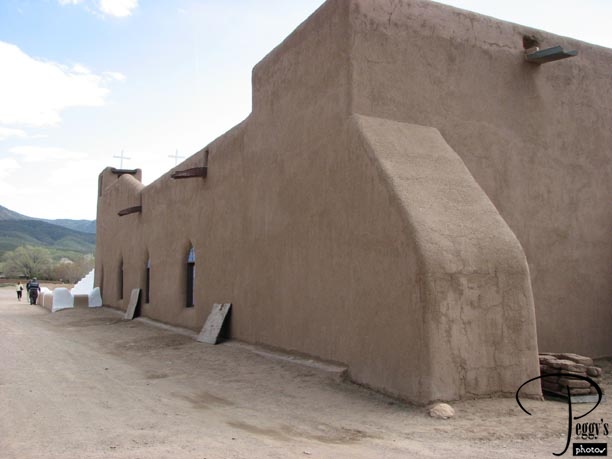
Walking along. The St. Jerome Catholic Church from the side.

Taos Pueblo
Taos Pueblo
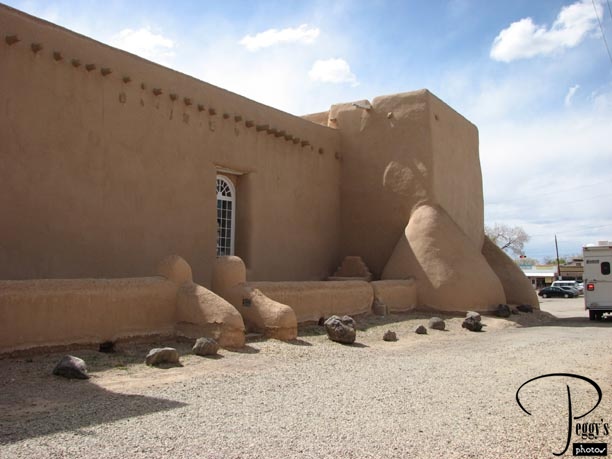
Stained–glass windows on the side of the church.

Taos Pueblo
Taos Pueblo
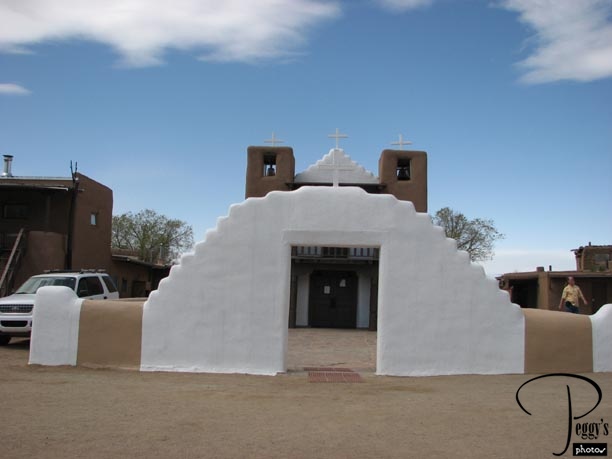
Front of the St. Jerome Catholic Church.

Taos Pueblo
Taos Pueblo
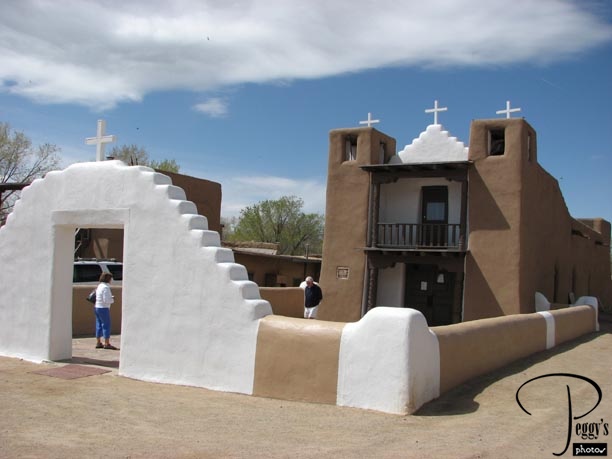
Another view of the St. Jerome Catholic Church. This church, built in 1850, is a National Historic Landmark and is named after the Pueblo’s patron saint. Mass is held here on Sunday mornings. The first St. Jerome church was built in 1619, but was destroyed by the Taos Indians during the Pueblo Revolt of 1680 (the Taos Indians led the revolt) as an assault on Spanish rule. In 1692, after the Spanish reconquest, St. Jerome was rebuilt. But in 1847, during the U.S.–Mexican War, the U.S. Army attacked the Taos Pueblo as they believed that the Taos Indians had murdered the Taos governor. Men, women, and children sought sanctuary inside the church, but the church was totally destroyed and the people inside it perished. A bell tower from the church built in 1692 survived and is on the Pueblo grounds. I think this area was cordoned off or else I just missed seeing it.

Taos Pueblo
Taos Pueblo
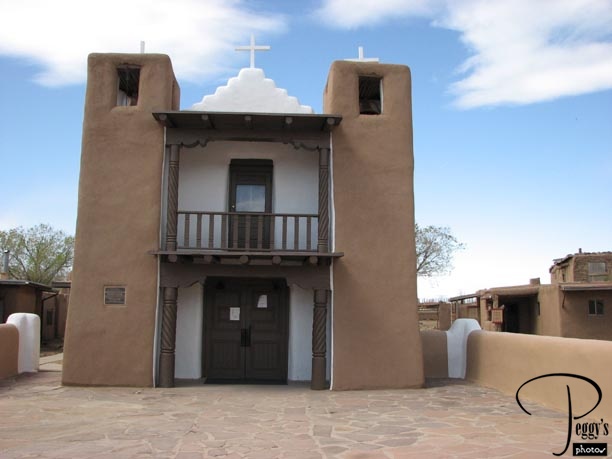
Another photo of the St. Jerome Catholic Church. No photos were allowed inside the church. You can join a free walking tour that meets in front of the church or walk around on your own (map provided). I decided to walk around on my own.

Taos Pueblo
Taos Pueblo
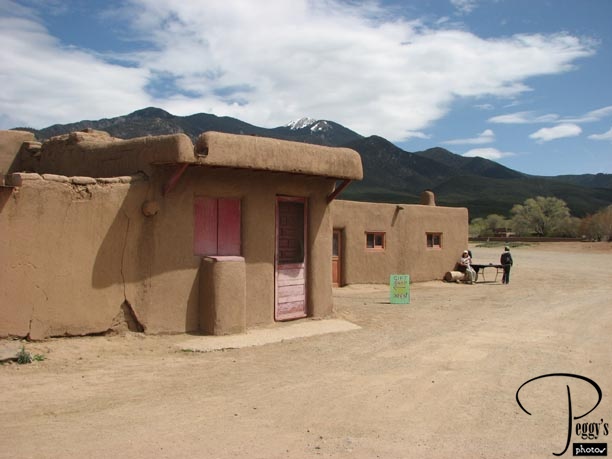
Walking onward.

Taos Pueblo
Taos Pueblo
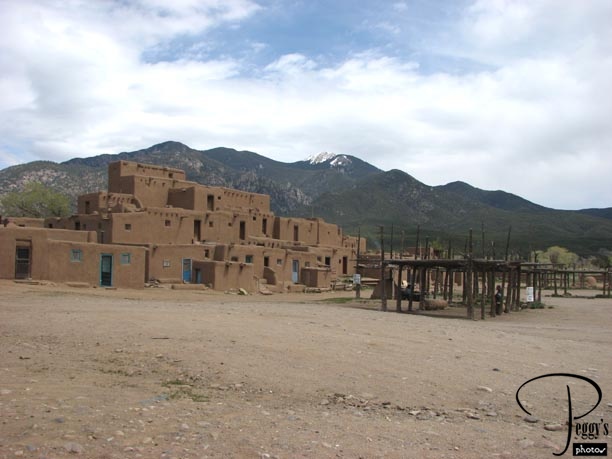
My first view of the famous North House (Hlaumma). Southwestern architecture is based on the Taos Pueblo’s buildings. The North House ranges from one to five stories and each door in it is an entrance to a privately owned home. Homes are handed down from generation to generation and each family is responsible for their house’s maintenance––adobe plastering, roof repairs, and woodwork. The large dirt area in the photo is the Pueblo’s Plaza and the wood structure is made up of drying racks.

Taos Pueblo
Taos Pueblo
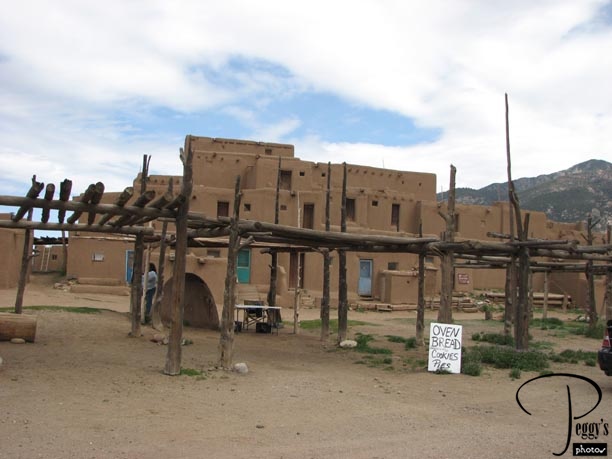
Close–up view of the drying racks, which are used to dry corn, meats, and berries.

Taos Pueblo
Taos Pueblo
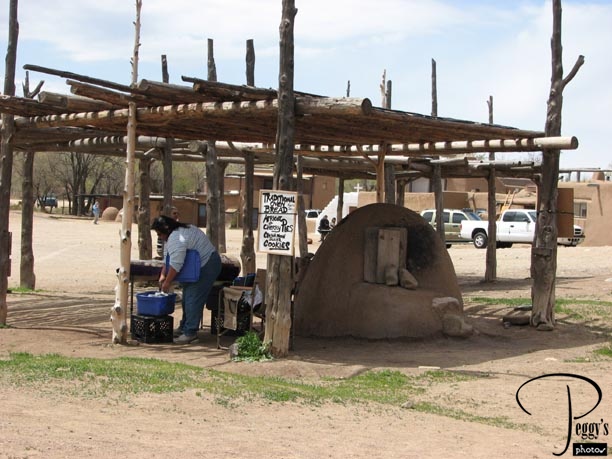
Indian woman selling bread and pastries. The adobe mound is a hornos and is used to bake bread. A fire is first built with cedar wood, then when the wood burns to ash it is removed and bread is ready to be baked in the hornos.

Taos Pueblo
Taos Pueblo
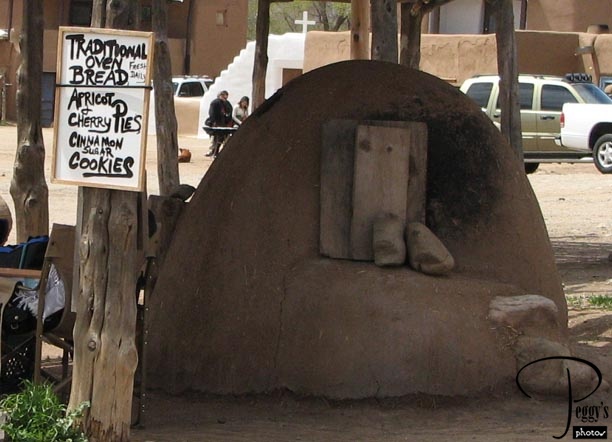
Traditional oven bread, apricot and cherry pies, and cinnamon sugar cookies for sale. There were also cookies with sprinkles on top of them and I bought some. They were okay.

Taos Pueblo
Taos Pueblo
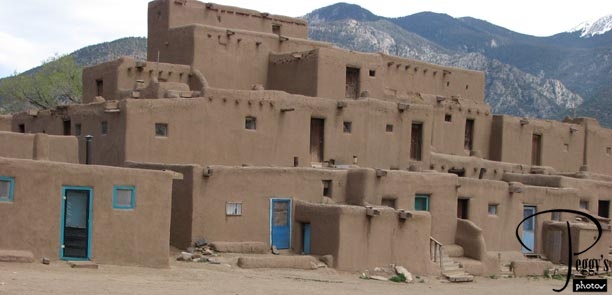
Another view of the North House.

Taos Pueblo
Taos Pueblo
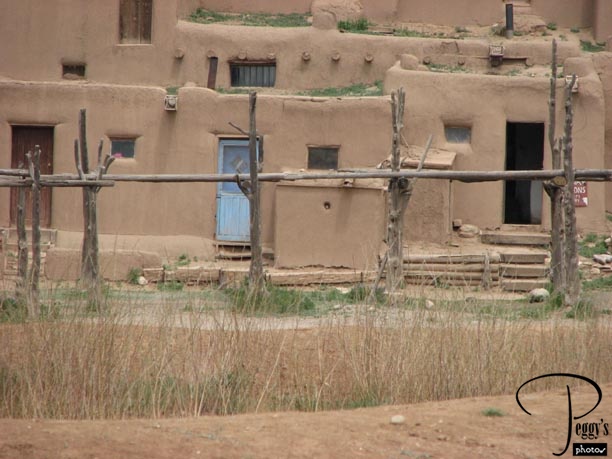
And a closer–up view.

Taos Pueblo
Taos Pueblo
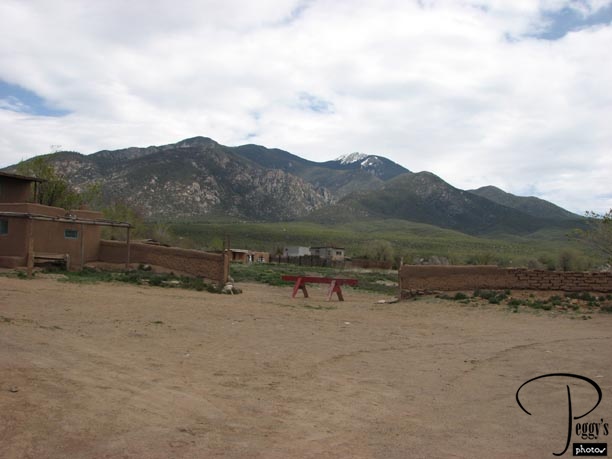
Remnants of the adobe wall that protected the Taos Pueblo from enemy tribes. Originally, there were also four watchtowers.

Taos Pueblo
Taos Pueblo
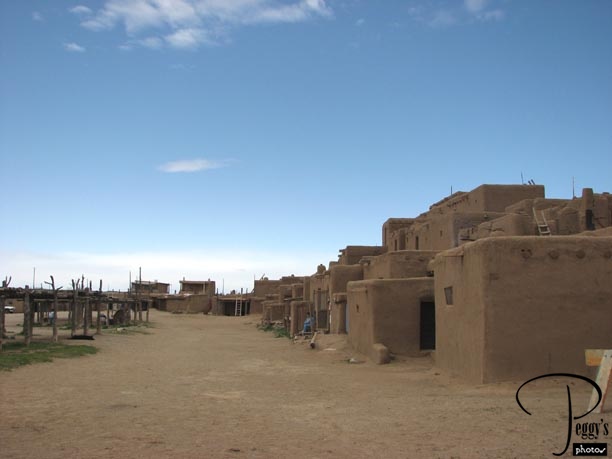
The North House from the side.

Taos Pueblo
Taos Pueblo
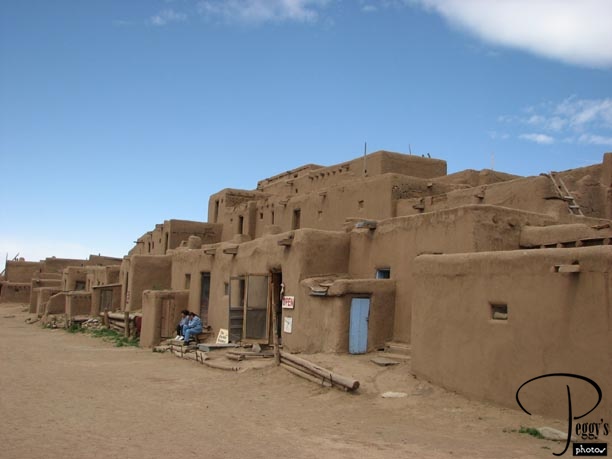
Two Indian women were talking in front of their stores inside the North House.

Taos Pueblo
Taos Pueblo
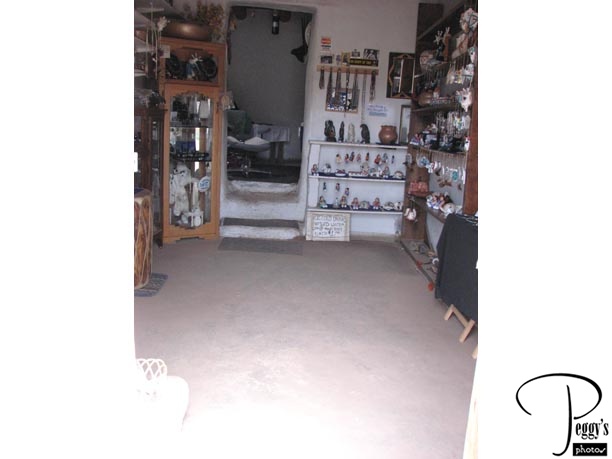
I went into one of their stores and bought a magnet and some other items. You reached the bottom level of the store by stairs and then there was an additional room off the bottom level room also reached by stairs. The rooms were small. This would have been the first floor of a pueblo house.

Taos Pueblo
Taos Pueblo
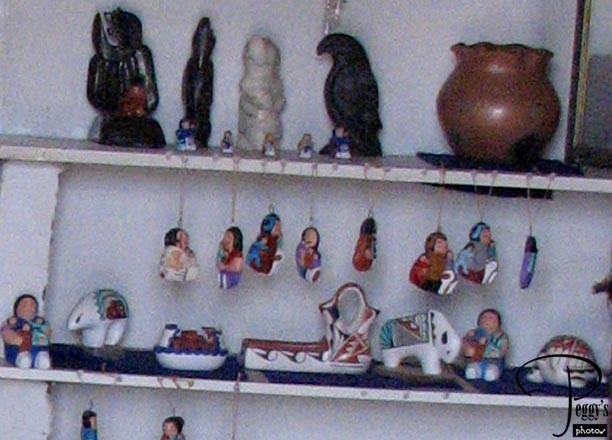
Some of items for sale in this store.

Taos Pueblo
Taos Pueblo
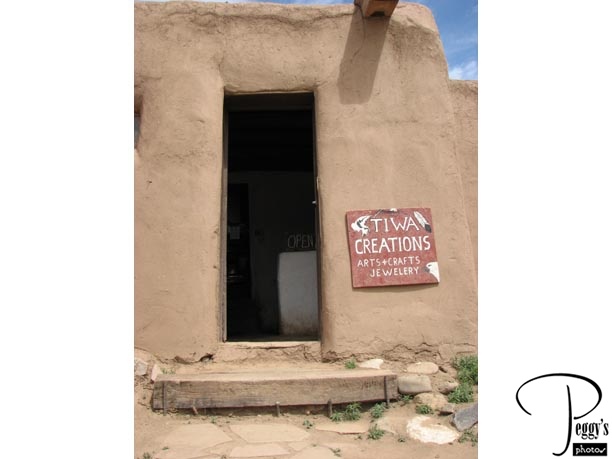
I also went into this store run by a very big one–armed Indian man.

Taos Pueblo
Taos Pueblo
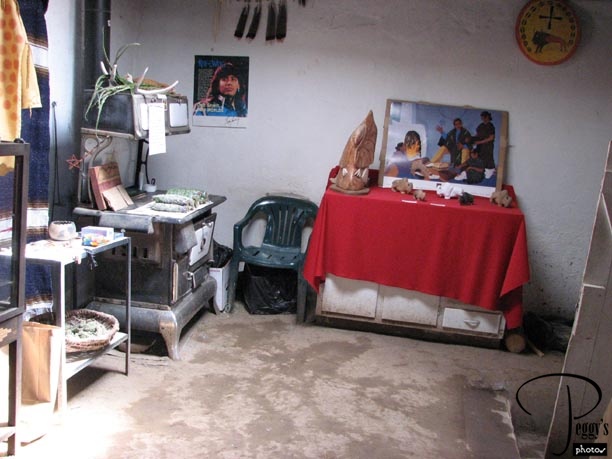
His store was so unusual that I asked him if I could take some photos of it. He said no, but then yes when I offered some money. This part of the store was up some steps from the bottom level.

Taos Pueblo
Taos Pueblo
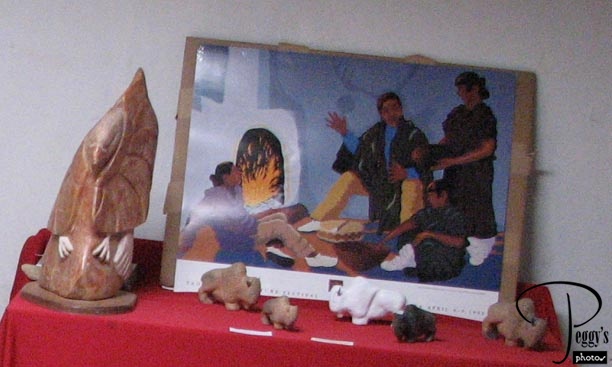
Close–up of some of his items for sale.

Taos Pueblo
Taos Pueblo
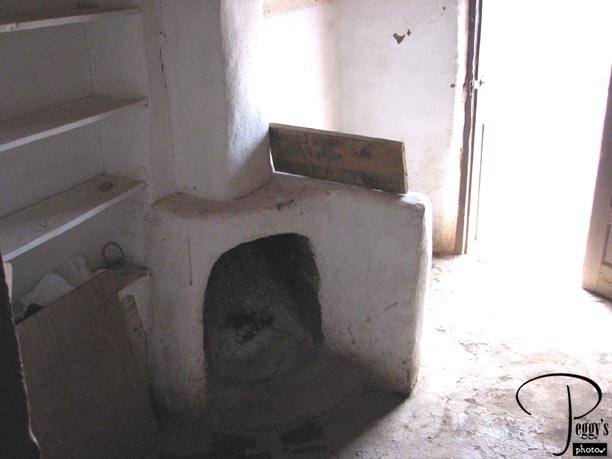
Fireplace on the lower level.

Taos Pueblo
Taos Pueblo
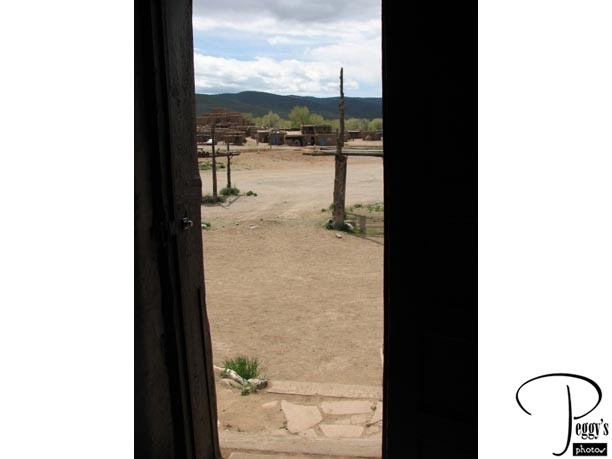
Looking out through the door of the store to the Pueblo.

Taos Pueblo
Taos Pueblo
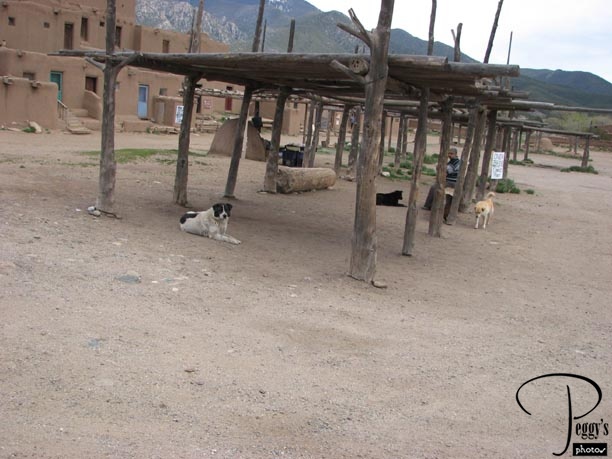
Dogs lounging under the drying racks.

Taos Pueblo
Taos Pueblo
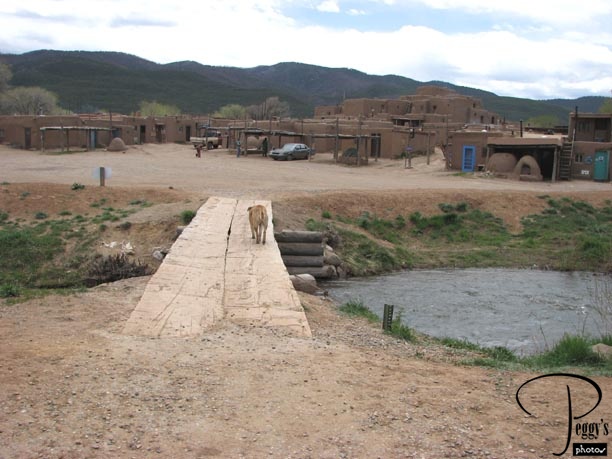
This dog followed me over on my way to the South House across the Rio Pueblo de Taos. I waited for him to get in front of me.

Taos Pueblo
Taos Pueblo
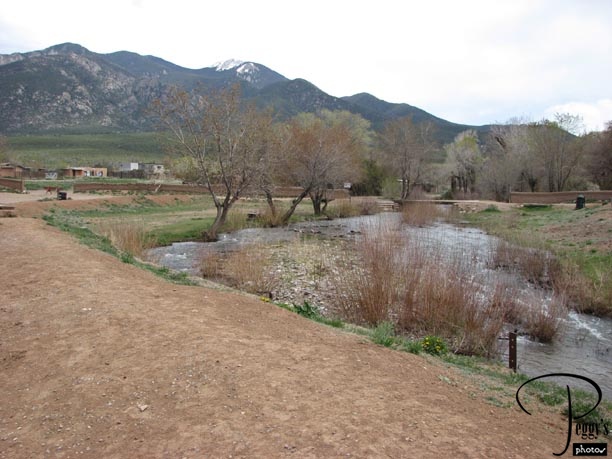
View to the east of the Rio Pueblo de Taos from the footbridge. This river is a source of drinking water for the Pueblo. Its origin is the sacred Blue Lake high up in the mountains.

Taos Pueblo
Taos Pueblo
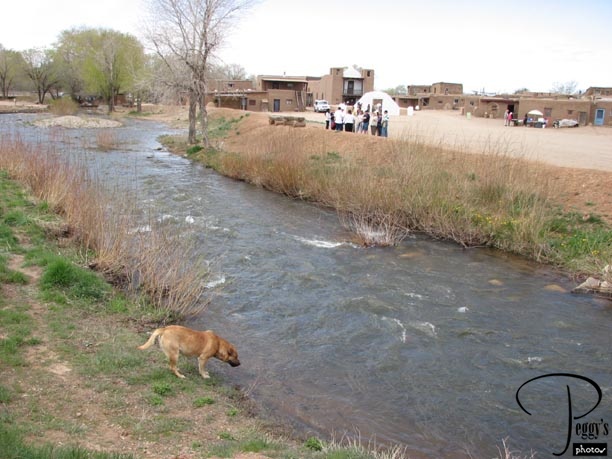
The view to the west with the St. Jerome Catholic Church in the background.

Taos Pueblo
Taos Pueblo
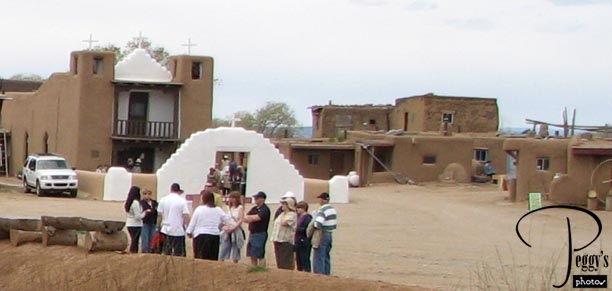
Close–up of the St. Jerome Catholic Church from the other side of the river.

Taos Pueblo
Taos Pueblo
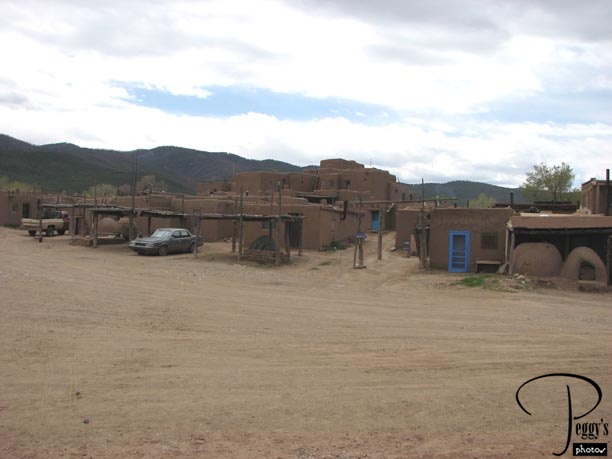
The South House––Hlaukwima.

Taos Pueblo
Taos Pueblo
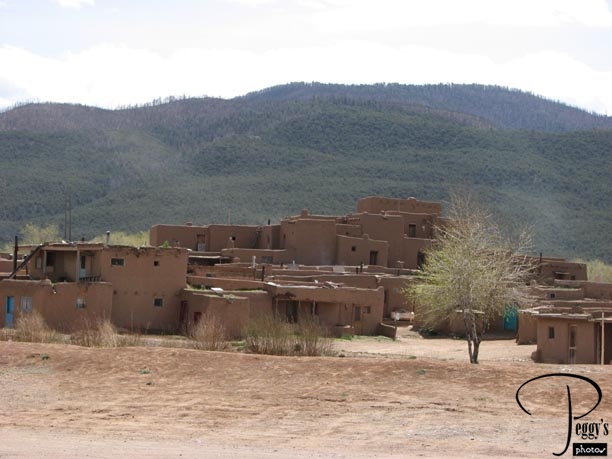
Closer–up view of the South House.

Taos Pueblo
Taos Pueblo
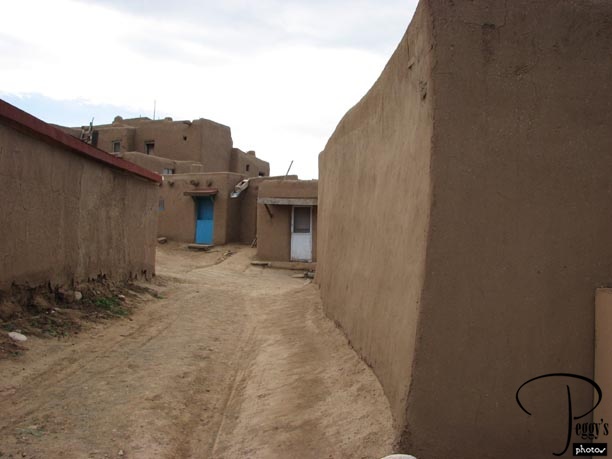
Walking through the South House part of the Pueblo.

Taos Pueblo
Taos Pueblo

Farther along.

Taos Pueblo
Taos Pueblo
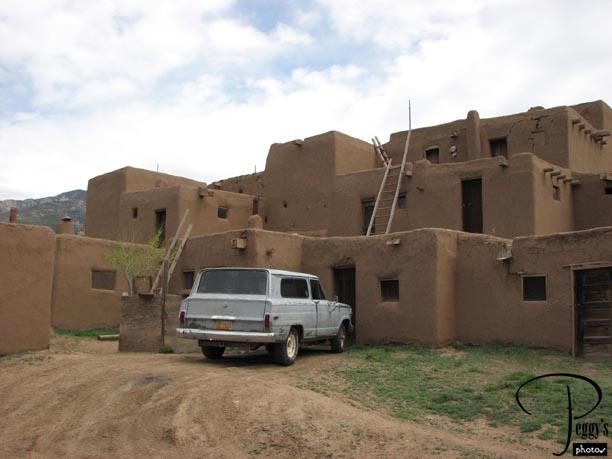
Three–story buildings of the South House. Ladders are used to get to the upper stories.

Taos Pueblo
Taos Pueblo
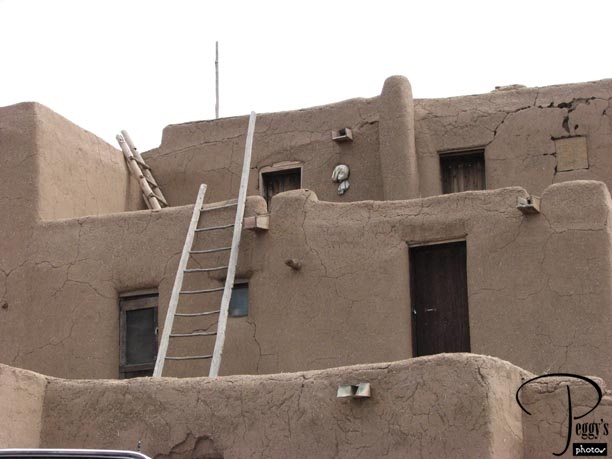
Close–up of the tri–level part of the South House.

Taos Pueblo
Taos Pueblo
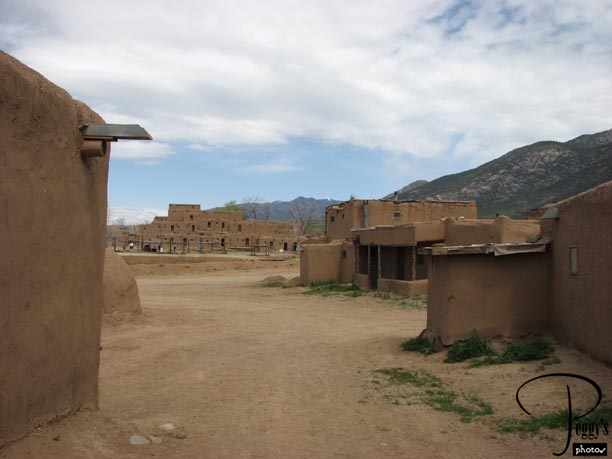
View of the North House from the South House. The North House and the South House make up the Taos Pueblo.

Taos Pueblo
Taos Pueblo
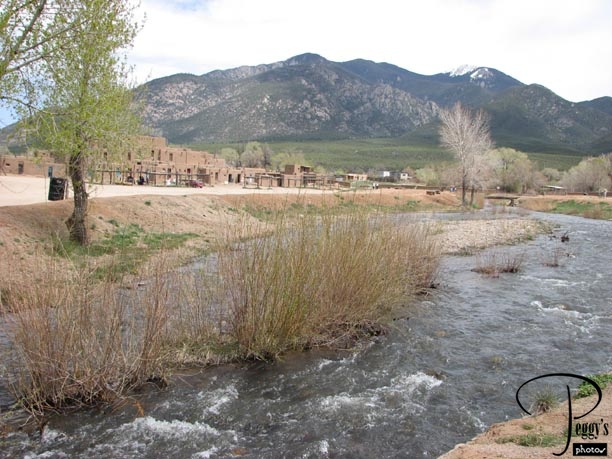
View of the North House from the other side of the Rio Pueblo de Taos.

Taos Pueblo
Taos Pueblo
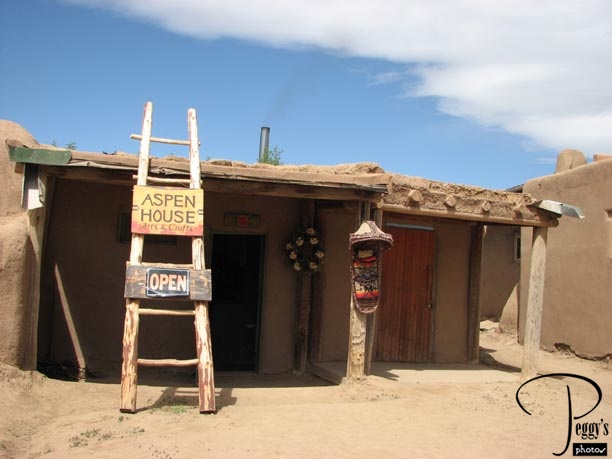
I walked back to the North House side by another footbridge. Photo: Another Pueblo Store.

Taos Pueblo
Taos Pueblo
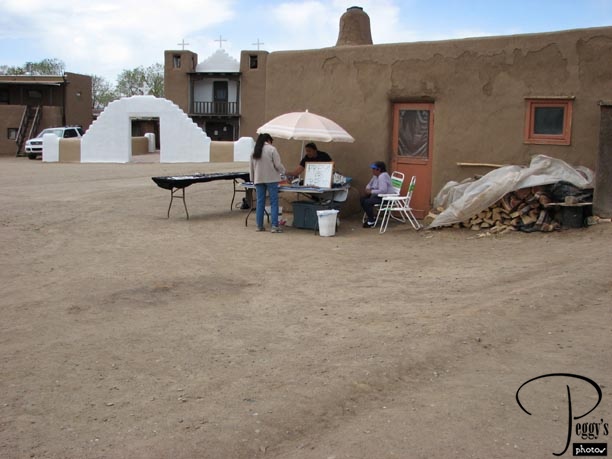
Indian women selling fry bread and jewelry.

Taos Pueblo
Taos Pueblo
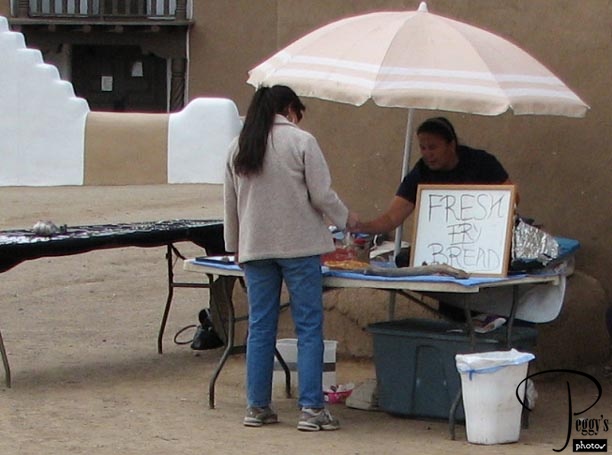
Fresh fry bread sign.

Taos Pueblo
Taos Pueblo
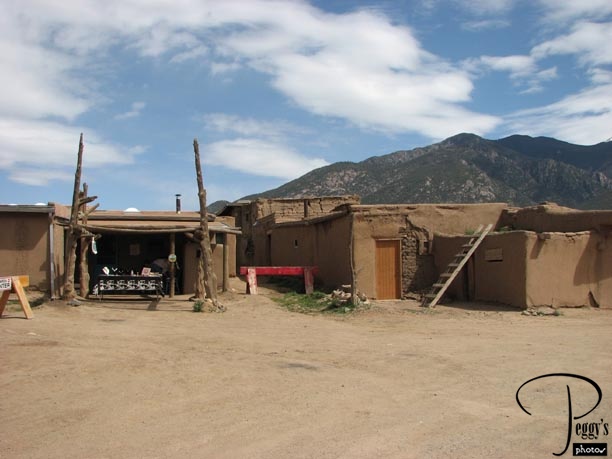
More Pueblo buildings and store.

Taos Pueblo
Taos Pueblo
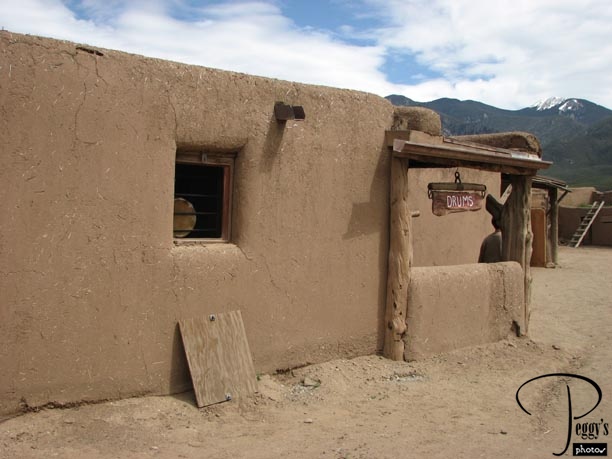
Another Pueblo store––this one selling drums.

Taos Pueblo
Taos Pueblo
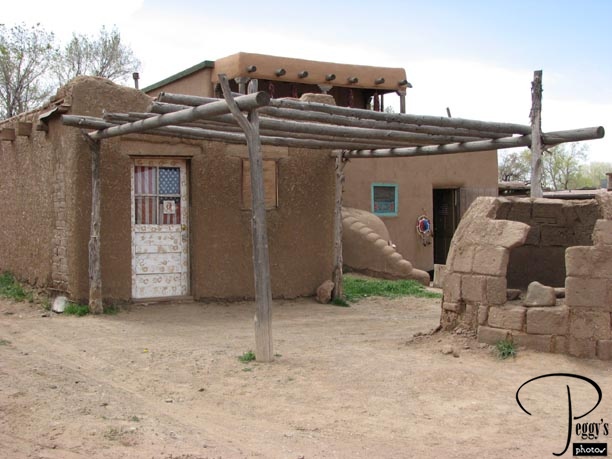
A Pueblo building with an interesting door.

Taos Pueblo
Taos Pueblo
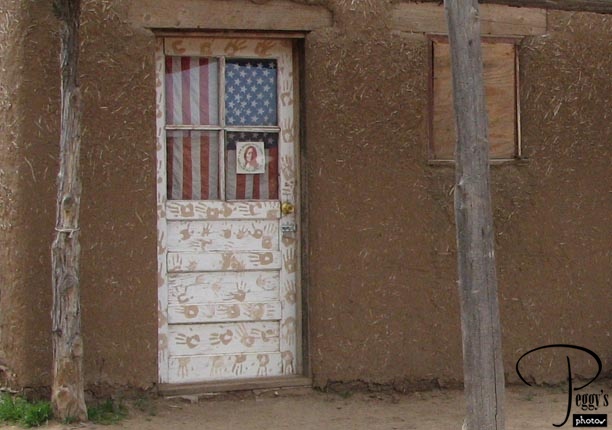
Close–up of the door.

Taos Pueblo
Taos Pueblo

Another interesting door.

Taos Pueblo
Taos Pueblo
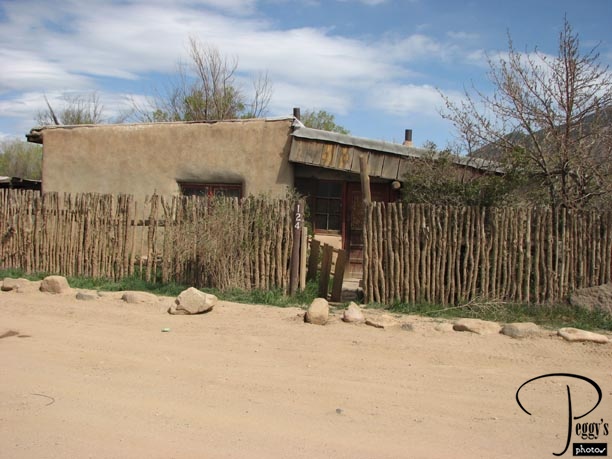
Another Pueblo building on the way back to my car.

Taos Pueblo
Taos Plaza
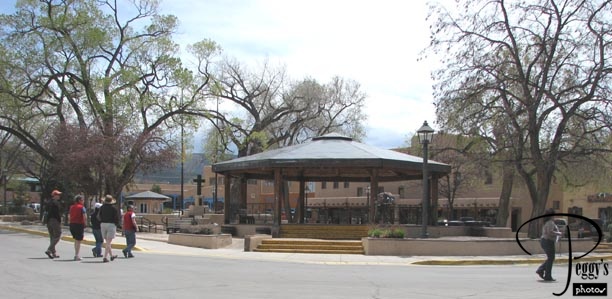
From the Taos Pueblo, I drove to the town of Taos to the Plaza area. Taos was established on May 1, 1796, when 65 families had petitioned Governor Don Fernando Chacon for the Don Fernando de Taos land grant. Taos was incorporated as a New Mexico municipality in 1934, having existed previously as a town under Spanish, Mexican, and U.S. Territory rule. Today, Taos is known as an artists’ community. Photo: Taos Plaza

Taos Plaza
Taos Plaza
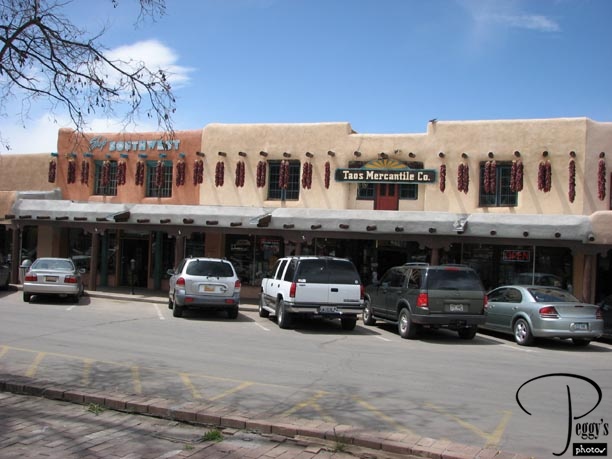
Adobe buildings on the Plaza. I ate lunch, an uninspired taco salad, at Ogelvies Taos Bar and Grill on the Plaza.

Taos Plaza
Taos Plaza
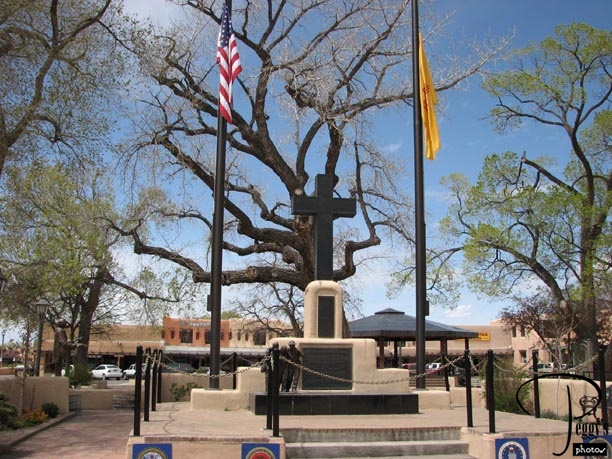
Veterans Memorial in the Plaza.

Taos Plaza
Taos Plaza
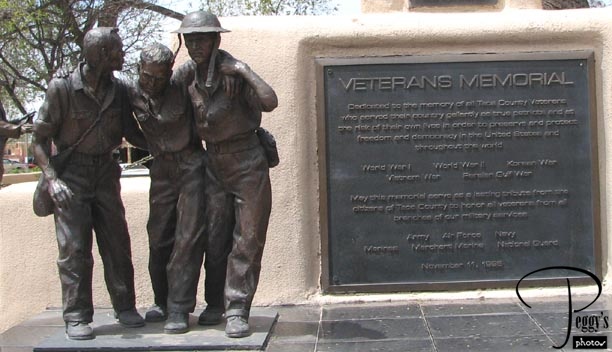
Statues on the Veterans Memorial.

Taos Plaza
Taos Plaza
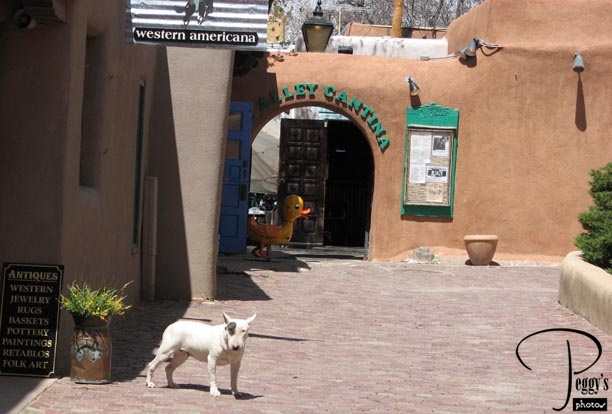
Dog in an alley off the Plaza. I didn’t do any more sightseeing in the town of Taos. Among other sites I could gone to was the Kit Carson House and Museum and the cemetery where Kit Carson and his wife are buried. I was running out of time and wanted to visit the San Francisco de Asis Church befoe I left Taos.

Taos Plaza
San Francisco de Asis Church
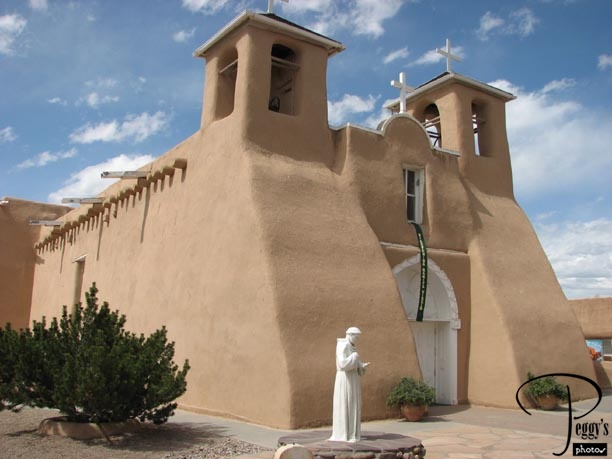
From the town of Taos, I went to find the San Francisco de Asis Church. It is only four miles from the town, but it took me about 1 hour to find the church. I didn’t go far enough south on the 68 and I thought that I had missed it so kept driving back and forth. I stopped to ask for directions to it and ended up going back and forth over one–lane side streets of very old adobe houses. I finally saw the church’s steeples from a distance and tried to figure out how to reach it, which I finally did. The church can also be hard to find as the rear of the church faces the 68, not the front of it. This Spanish Colonial adobe church was completed in 1816. It is also an example of Franciscan Old World architecture and has been photographed by Ansel Adams and painted by Georgia O’Keeffe, among others. You probably have seen many photos of it, as it is considered to be the most photographed adobe structure in the world.

San Francisco de Asis Church
San Francisco de Asis Church
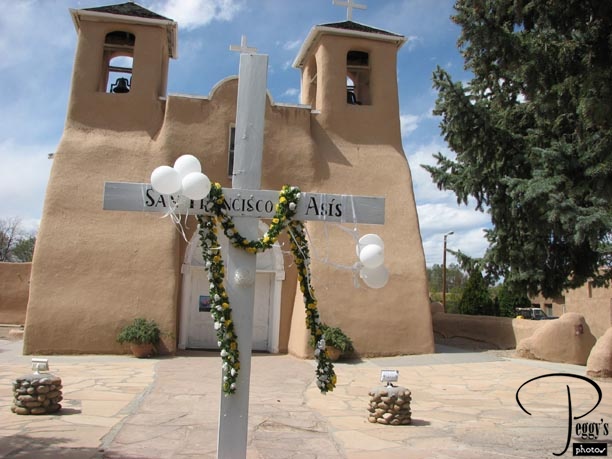
Another view of the San Francisco de Asis Church.

San Francisco de Asis Church
San Francisco de Asis Church

A side view.

San Francisco de Asis Church
San Francisco de Asis Church
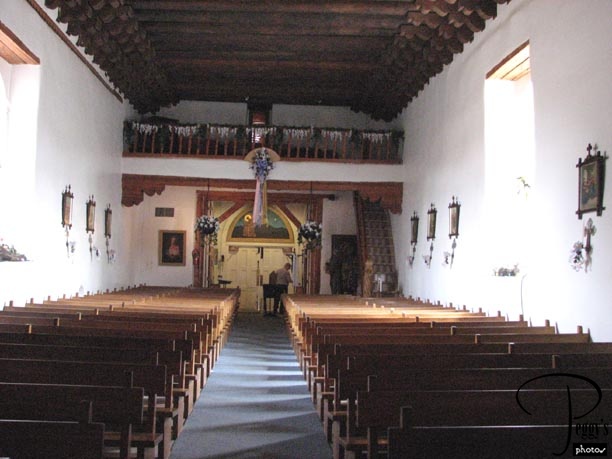
Inside the church.

San Francisco de Asis Church
San Francisco de Asis Church
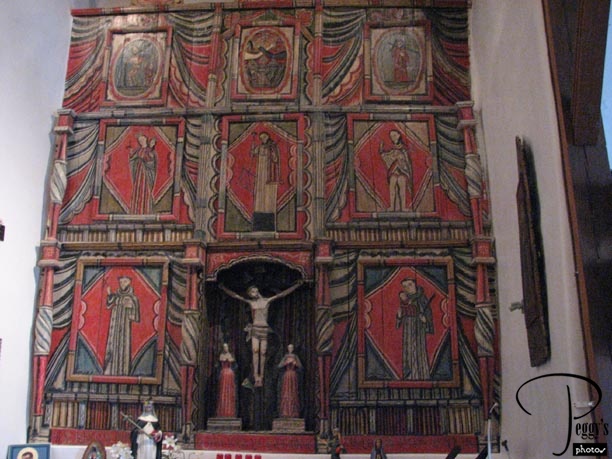
Close–up of the retablo.

San Francisco de Asis Church
San Francisco de Asis Church
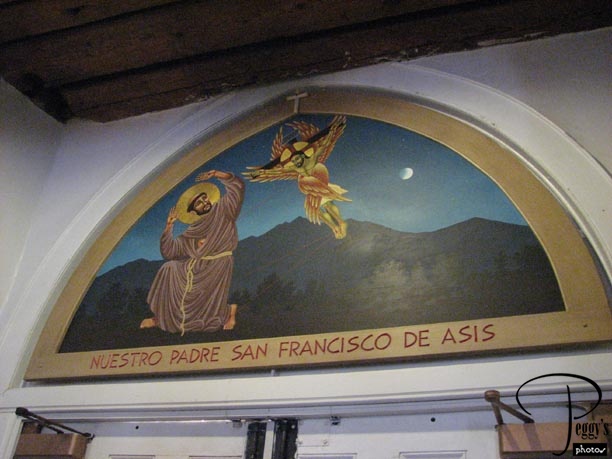
Fresco above the inside door.

San Francisco de Asis Church
San Francisco de Asis Church
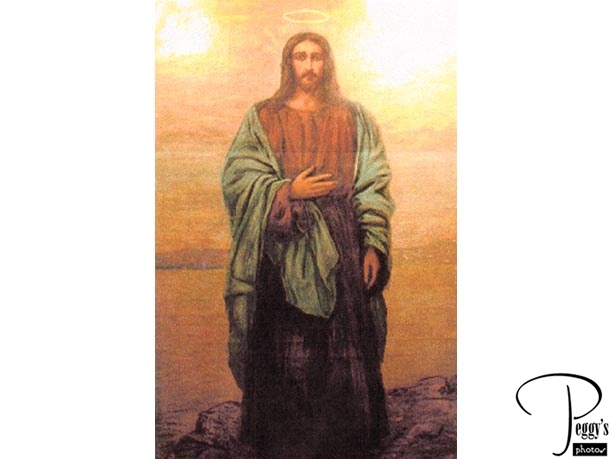
In the parish house of the church hangs “The Shadow of the Cross,” by Henri Ault (1896), which is known as the “Miracle Painting.” In ordinary light, it appears, as in this photo scanned from the Internet, as a barefooted Christ at the Sea of Galilee. In darkness, it becomes luminescent, with a cross appearing over the left shoulder of Jesus. No luminescent process was available at the time of the painting, nor has anyone been able to figure out why the cross appears. To view the painting, first you are invited to watch a video presentation. The video wasn’t due to start for awhile and I didn’t want to wait for it, so I missed, regrettably now, seeing the painting. Jill has told me, who has seen the painting, that wherever you stand in the room where it hangs, it looks like Jesus is walking toward you.

San Francisco de Asis Church
San Francisco de Asis Church
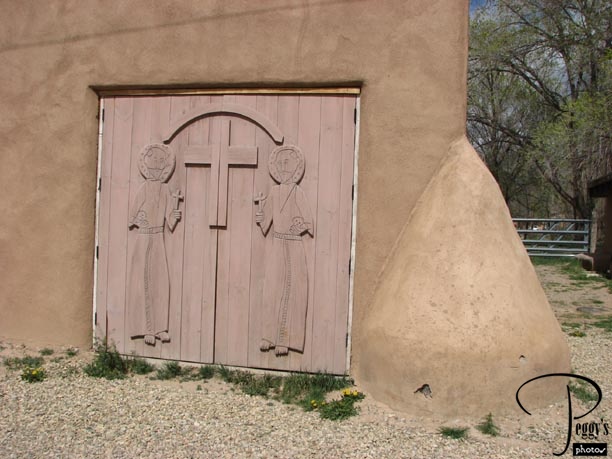
Doors on another part of the church complex.

San Francisco de Asis Church
San Francisco de Asis Church

Old adobe structure in the complex.

San Francisco de Asis Church
San Francisco de Asis Church
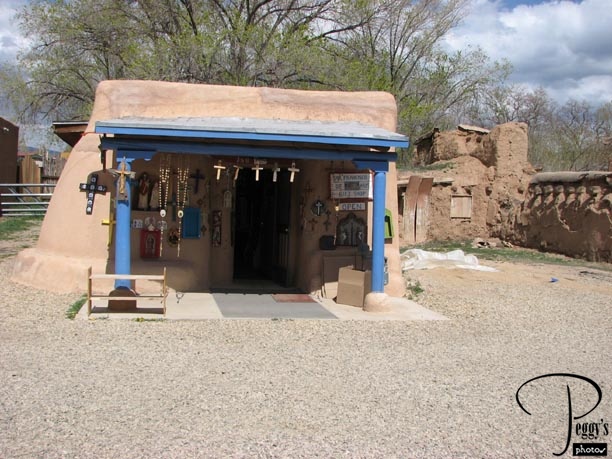
Religious souvenir shop in the complex. If you want to purchase a retablo (the wooden religious paintings), this store has an excellent selection of them at very good prices.

San Francisco de Asis Church
Going Back to Albuquerque
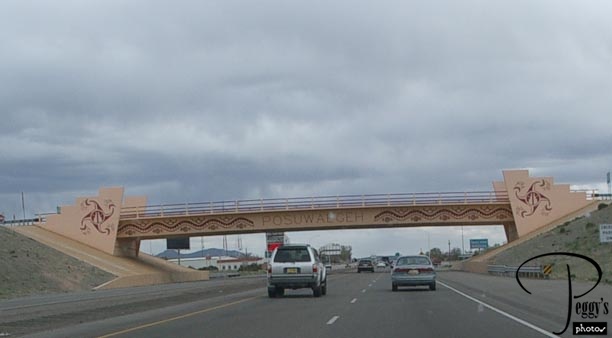
I spent some more time in Taos trying to find that easy flat desert road that my doctor had told me about. I finally gave up on finding a road that I found out later didn’t exist and headed back, unhappily, on the 68, again through the Rio Grande Gorge. Then I was on the 285 and passing under a series of decorated overpasses. These were done by Native American artists. This first one has “Posuwaegeh,” written across it, which is the traditional name of the Pojoaque Pueblo, of which I was driving through.

Going Back to Albuquerque
Going Back to Albuquerque
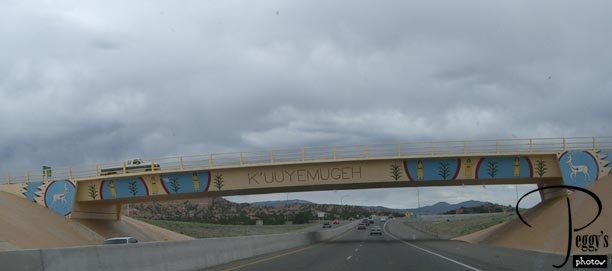
The second overpass had “K’uuyemugeh” written on it, which is the traditional name for the Cuyamungue Tesuque Indian Reservation, which I am now going through.

Going Back to Albuquerque
Going Back to Albuquerque
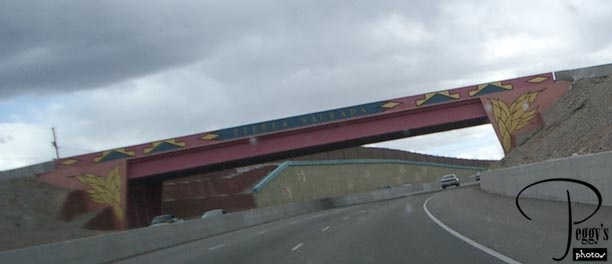
The third overpass has “Tierra Sagrada,” meaning “Sacred Earth,” written on it on one side and “Paz,” meaning “Peace,” written on the other side.

Going Back to Albuquerque
Going Back to Albuquerque
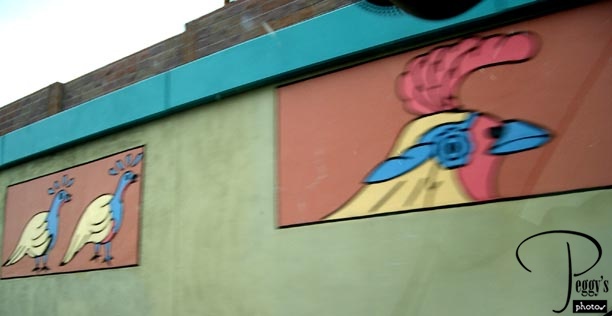
Many overpasses also have birds, animals, and Indian designs on them.

Going Back to Albuquerque
Going Back to Albuquerque
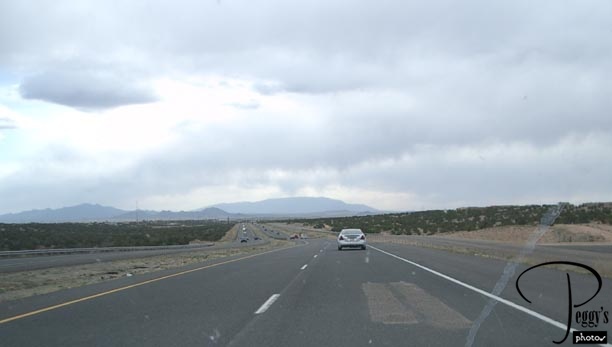
Still on the 285 heading toward Santa Fe and then on to Albuquerque. I stopped on the 285 to call my sister. I had tried to call her in Taos, but no matter where I tried I couldn’t get a cell phone signal. She asked me where I was and I told her that I had just driven through the Ohkay Owingeh Indian Reservation (there really is an Indian tribe named Ohkay!). I reached Albuquerque just in time for dinner.
